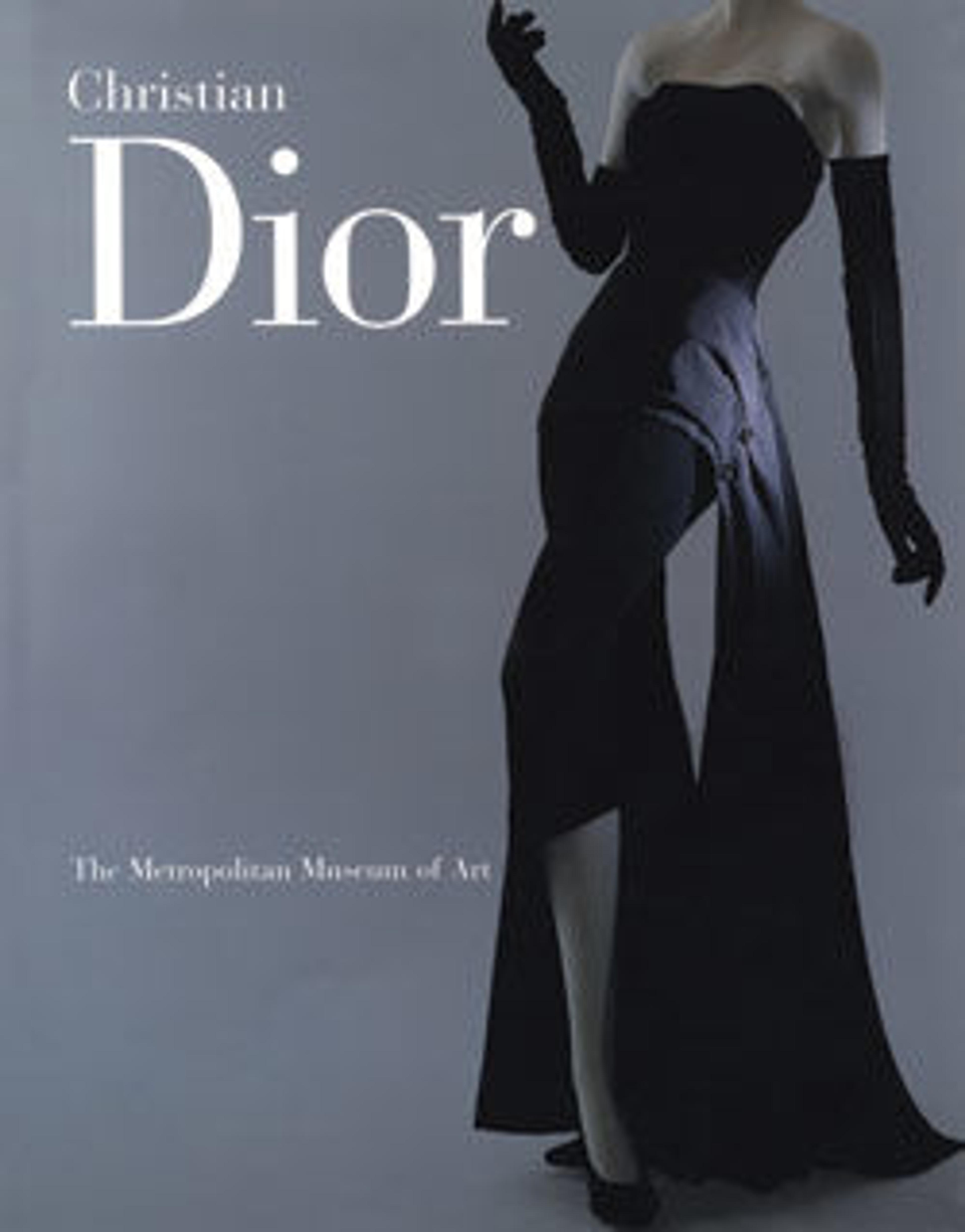"Compiègne"
By tacking the soft fabric to a rigid underbodice in frozen folds, the designer took full advantage of the attributes of the dress, combining strict silhouette and lissome flow. The fabric spirals around the body in a torque of drapery that is only possible through the surety of an infrastructure.
Summer residence of France's kings and queens and royal hunting grounds for centuries, Compiègne is a richly evocative place. In one of Dior's last great historicist collections, he used the mystique of Compiègne for a dress with the silhouette of the crinoline forms of the Second Empire. Its lush textile may also be an homage to the long history of such French silks and dress fabrics. Although the undeniable focus of this gown is the virtuoso wet-draping effect of the bodice, the subtle center-front inverted skirt pleat recalls Dior's earlier interest in scissorlike construction.
Summer residence of France's kings and queens and royal hunting grounds for centuries, Compiègne is a richly evocative place. In one of Dior's last great historicist collections, he used the mystique of Compiègne for a dress with the silhouette of the crinoline forms of the Second Empire. Its lush textile may also be an homage to the long history of such French silks and dress fabrics. Although the undeniable focus of this gown is the virtuoso wet-draping effect of the bodice, the subtle center-front inverted skirt pleat recalls Dior's earlier interest in scissorlike construction.
Artwork Details
- Title: "Compiègne"
- Design House: House of Dior (French, founded 1946)
- Designer: Christian Dior (French, Granville 1905–1957 Montecatini)
- Date: fall/winter 1954–55
- Culture: French
- Medium: silk
- Credit Line: Gift of Mrs. Byron C. Foy, 1956
- Object Number: C.I.56.60.7
- Curatorial Department: The Costume Institute
More Artwork
Research Resources
The Met provides unparalleled resources for research and welcomes an international community of students and scholars. The Met's Open Access API is where creators and researchers can connect to the The Met collection. Open Access data and public domain images are available for unrestricted commercial and noncommercial use without permission or fee.
To request images under copyright and other restrictions, please use this Image Request form.
Feedback
We continue to research and examine historical and cultural context for objects in The Met collection. If you have comments or questions about this object record, please complete and submit this form. The Museum looks forward to receiving your comments.
